|
| |
Archives
|
Saturday September 23 2006
|
book recommendations
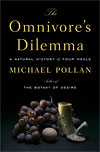 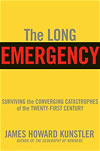 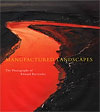 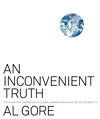
This is sort of a perfect storm of books: The Omnivore's Dilemma by Michael Pollan, The Long Emergency: Surviving the Converging Catastrophes of the Twenty-First Century by James Howard Kunstler, Manufactured Landscapes: The Photographs of Edward Burtynsky by Edward Burtynsky, An Inconvenient Truth: The Planetary Emergency of Global Warming and What We Can Do About It by Al Gore. They reinforce each other. After reading all four you will want find a large parking lot and commit ritual suicide. Maybe that's overstating it a little bit but each is a very thought provoking book and should be read. First, how about a snack?

The Omnivore's Dilemma
by Michael Pollan
From Pollan's website:
|
In this groundbreaking book, one of America’s most fascinating, original, and elegant writers turns his own omnivorous mind to the seemingly straightforward question of what we should have for dinner. To find out, Pollan follows each of the food chains that sustain us—industrial food, organic or alternative food, and food we forage ourselves—from the source to a final meal, and in the process develops a definitive account of the American way of eating. His absorbing narrative takes us from Iowa cornfields to food-science laboratories, from feedlots and fast-food restaurants to organic farms and hunting grounds, always emphasizing our dynamic coevolutionary relationship with the handful of plant and animal species we depend on. Each time Pollan sits down to a meal, he deploys his unique blend of personal and investigative journalism to trace the origins of everything consumed, revealing what we unwittingly ingest and explaining how our taste for particular foods and flavors reflects our evolutionary inheritance.
| |
This is certainly one of the most thoughtful books on food. He tracks the food for four meals from the source to the table: industrial, large scale organic, artisanal organic, and foraging/hunting. One of the major points that he keeps coming back to is that we are eating converted sunlight. Plants convert sunlight to grow and we eat the plants. Or animals eat the plants and we eat the animals. And then there is oil. Oil that is stored energy from the sun through ancient plant matter that has been formed under geological pressure and temperature. In the industrial food chain, we find oil everywhere. From fertilizer to antibiotics and too many places in between. The amount of energy input is huge for the amout of energy that is in the food that the industrial food chain produces. And that energy is from non-renewable oil and gas, not only for growing it, but also for moving it around the world. Read this book and be aware.
Michael Pollan
After becoming aware of how much most of our food depends on oil you might think about what would happen if the oil went away. You haven't? Well Jim Kuntsler has been thinking about it.
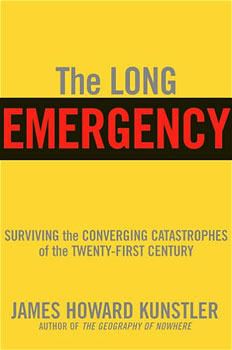
The Long Emergency:
Surviving the Converging Catastrophes of the Twenty-First Century
by James Howard Kunstler
From Amazon:
|
Kunstler established a writing career criticizing American suburbia (e.g., The Geography of Nowhere, 1993), and his animosity against his bete noire does not abate here. It's a wide--casting, statistics-studded ramble through energy production and technologies, world economic and political history, and climatology that culminates in predictions that the suburbs are doomed. His assertions are always self--confident, sometimes immodestly so, as when he dismisses in toto any possibility that the market, or technologists, will rescue contemporary civilization from a world of declining oil production. Discerning an imminent future of protracted socioeconomic crisis, Kunstler foresees the progressive dilapidation of subdivisions and strip malls, the depopulation of the American Southwest, and, amid a world at war over oil, military invasions of the West Coast; when the convulsion subsides, Americans will live in smaller places and eat locally grown food. Credit Kunstler with an energetic argument, but whether he has achieved his stated goal--waking up an ostensibly somnolent public--via his relentless and alarmist pessimism remains to be seen.
| |
[more]
This is an uneven book but his core arguments are pretty sound. First, we are very close to peak oil. It may have already happened, or it may be happening as we speak, or it will happen with a very few years. Doesn't matter when. We will be having to live with declining supplies of oil and gas and their increase in price. And technology and alternate energy sources aren't going to save us. The energy in the oil we have been burning up these past 100 years or so was a one time deal. Kunstler looks at the alternate energy sources and, while they will be of some help, the are all require oil energy in the end. Our living arrangements (surburbia) and eating arrangements (the industrial food chain) are based on cheap oil. No cheap oil and our living and eating arrangements will need some radical changes. Most proposed solutions assume we will still be living in surburbia and doing the same things but in high-mileage cars. Not! Will Kunstler's predictions come true? Doesn't matter but there will be big changes. He has been thinking a lot about this and he provides food for thought for you to do your own thinking. You might want to think about this. He has a blog:
Clusterfuck Nation by Jim Kunstler
After all this heavy shit I got a nice picture book from the library.
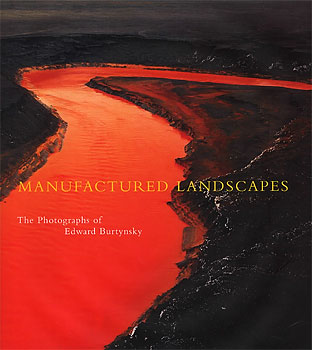
Manufactured Landscapes:
The Photographs of Edward Burtynsky
by Edward Burtynsky
From Amazon:
|
Over the past twenty-five years, the internationally renowned Canadian photographer Edward Burtynsky has been an explorer of unfamiliar places where human activity has reshaped the surface of the land. His astonishing large-scale color photographs of the landscapes of mining, quarrying, railcutting, recycling, oil refining, and shipbreaking uncover a stark, almost sublime beauty in the residue of industrial "progress." The implicit social and environmental upheavals that underlie these images make them powerful emblems of our times. This handsome catalogue of the first major retrospective of Burtynsky’s work features essays by Lori Pauli, Kenneth Baker, and Mark Haworth-Booth, as well as a wide-ranging interview with the artist by Michael Torosian. The book includes sixty-four color plates.
| |
Many of these photographs are on Burtynsky's website but these were taken with a large format camera and need to be seen large. Beautiful images. Disturbing images. The book includes,among others, pictures of rail cuts, mines, tailings, quarries, and ship breaking in Bangladesh. Pictures of landscapes altered by man. Check out his website to see the pictures. Get the book to really see the pictures.
Edward Burtynsky Photographic Works
I missed the movie but Big Al has a book version.
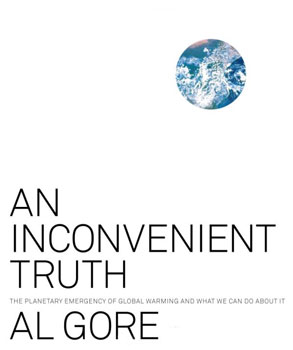
An Inconvenient Truth:
The Planetary Emergency of Global Warming and What We Can Do About It
by Al Gore
|
Our climate crisis may at times appear to be happening slowly, but in fact it is happening very quickly-and has become a true planetary emergency. The Chinese expression for crisis consists of two characters. The first is a symbol for danger; the second is a symbol for opportunity. In order to face down the danger that is stalking us and move through it, we first have to recognize that we are facing a crisis. So why is it that our leaders seem not to hear such clarion warnings? Are they resisting the truth because they know that the moment they acknowledge it, they will face a moral imperative to act? Is it simply more convenient to ignore the warnings? Perhaps, but inconvenient truths do not go away just because they are not seen. Indeed, when they are responded to, their significance doesnt diminish; it grows. -- Al Gore
| |
This book has lots of pictures. But sometimes pictures tell the story. Big Al covers all the bases here. Not a lot of detail, but enough to scare the bejesus out of you. Very well done. (And to think we got Little George instead.) Kunstler only mentions global warming briefly in The Long Emergency. The effects of global climate change that Gore talks about are only going to make the effects of peak oil worse. At the end of An Inconvenient Truth Gore talks about what to do to fight global warming but the solutions are only half-solutions since they don't really take into account peak oil.
An Inconvient Truth
Four books that should give you pause.
|
Wednesday September 20 2006
|
give us this day another daily photograph
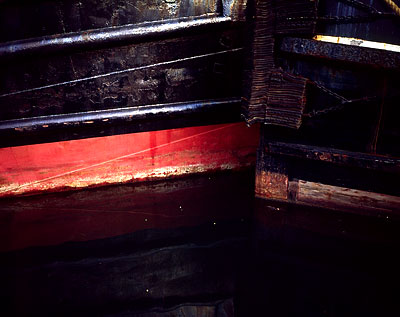
Fishing boats
bigger
gordy's image archive index
It's a twofer today. While the major industry on Wrangell seemed to be the sawmill, there was also fishing. After all, Wrangell Island is an island.
give us this day our daily photograph
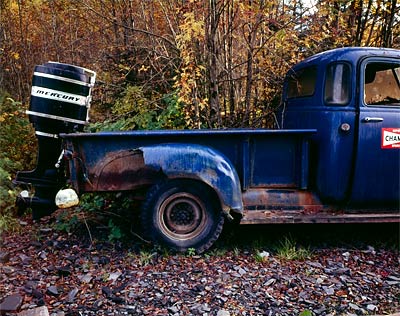
Mercury
bigger
gordy's image archive index
As I recall, and this was 30 years ago so things might have changed and my memory may not be what it never was, there were only about 8 or 9 miles of paved road on Wrangell Island. This is probably why the inhabitants needed to be creative with their transportation.
|
Tuesday September 19 2006
|
give us this day our daily photograph
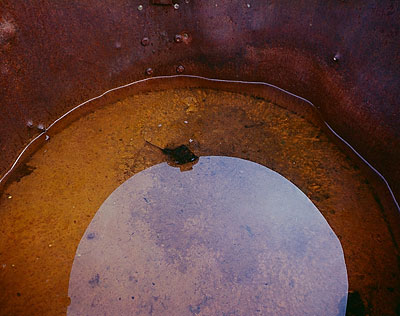
Bottom of the barrel
bigger
gordy's image archive index
Another Wrangell shot. These 4x5 Ektachrome transparencies are causing me a bit of a kerfuffle. (I don't know where these words come from. They appear unbidden in my mind. Kerfuffle is an actual word.) These transparencies are so easy to scan! And I have a reference with the transparency. One of my fears with using transparencies is exposure. You can't be a sloppy as you can with negatives but these have been fine. I have a few complaints on how 30 year old Ektachrome renders colors but I'm sure that Fuji Velvia 100 has benefited from 30 years of research and development. Maybe I should try some of that Velvia? It still doesn't have the lattitude of negatives.
zoe and gerry and oprah
As I mentioned a week ago, Zoe wrote to Oprah for assistance in getting her mom Gerry, who has Alzheimer's, out of Western State Hospital. Zoe wrote Oprah again as have I. Every time we see Gerry her Alzheimer's has gotten worse. She still recognizes us but there will come a time when she won't. The time she still knows us is being wasted in a State institution that is a 5 hour round trip for us. We can only make it once a week. Our time with Gerry if going and we won't be able to get it back. We are both asking all we know to write Oprah (Zoe has the link here.) If you could write Oprah about Gerry, and Zoe's request, we would both be most grateful. Thanks.
give us this day our daily photograph
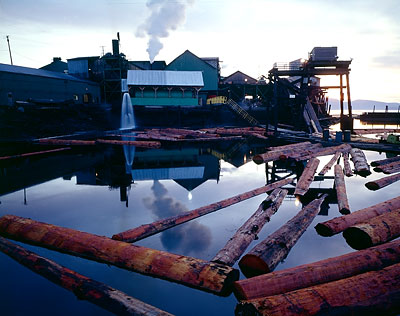
Wrangell sawmill
bigger
gordy's image archive index
Another of my Alaska series from 30 years ago taken September, 1976. This is one of the last things I did with that 4x5 Nagaoka. A couple of months before I went up to Alaska I met Candi who was to become my wife and the mother of my three children. In 1978 I was turning my darkroom back into a bedroom for Jenny, our first born.
america the beautiful
Joe is off his meds again. (That's a good thing.)
Madmen and Sedatives: Inside the Iron Theater
by Joe Bageant
|
Nobody talks about it out loud, but a few million Americans are seriously doubting their sanity these days. Or having their sanity doubted. Or both. They seldom speak their minds because what is going on in there is a vision of society that conjures grave doubt, if not outright horror. It is the kind of stuff that will get your ass kicked off the island in a heartbeat. Nobody wants to hear it.
Yesterday I was gridlocked with my wife in traffic near the new mall, surrounded by cars full of monsters. Every redneck face and bloated or coifed middle class head in every vehicle was a grotesque, awful thing. In them you could see the meanest kind of white man ignorance, or smug middle class obliviousness, the kind that could care less if all the babies in Iraq were fried on spits in the Green Zone of Baghdad, so long as their nails get done on Saturdays. (Ah, you've seen the monsters too, haven't you!) There was that fleshy, overweight killer ugliness America seems to produce these day, the faces of a happy motoring people whose armies hold the world at gunpoint so they can stuff down pizza and check out this town's newest mall. Underneath the ugliness, there's a festering mean streak caused by frustration of knowing deep-down that government and commerce are corrupt -- everybody knows this, but tolerates it for fear of losing their bling. The choice was ever thus (de Tocqueville noted its beginnings) but now has become a waking nightmare. One that brings up rage for some if us, rage that, if expressed in the wrong places and too often will get me thrown into the psyche ward if I tarry too much longer here in the land of the free.
"Lookie there," I told my wife, who was driving, "A fucking car wash right over the spot where Nancy Hanks Lincoln's mother was born! I remember when it was in a cornfield. And all these zombies who don't give a crap about the bloody sand and sweatshops they create, just so they can buy a cheap skirt and drive cars worth 10 years of wages in most of the world through a goddamned car wash! If every American died tomorrow, it is unarguable that the planet would be way more sustainable for not having to feed their greed!" On the inside I was bawling and screaming at the same time. I go off on these tirades increasingly these days. It is not good.
| |
[more]
furniture
My sister, Madelane, sent me this link. She knows I like bicycles.
Bike Furniture Design
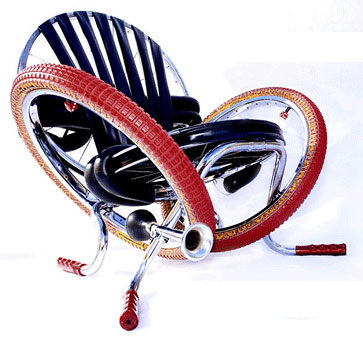
[more]
middle east
Helena reports back on a talk by Pat Lang. Pat's blog has become a regular read of mine. I must add it to my blogroll. I must add a lot of stuff to the blogroll.
Patrick Lang: "The Best Defense..."
by Helena Cobban
|
Colonel Lang "sticks out" in Washington for his informed willingness to take on what passes for "received wisdom" regarding the Middle East. His publications include the memorable "Drinking the Koolaid" in Middle East Policy. It's still an important, sobering read. Quite far afield from Graham Allison's realist "rational choice" decision-making model, Lang attributes the disastrous decision to invade Iraq to a loss of nerve among policy makers and analysts. Instead of honorably sticking to their convictions, even if it meant "falling on their swords," career-preserving senior policy makers were more inclined to drink from a Jonestown-like vat of poisonous illusions. "Succumbing to the prevailing group-think" drawn up by the small core of neoconservative "vulcans," Lang's former intelligence colleagues "drank the koolaid" and said nothing, leaving them henceforth among the "walking dead" in Washington.
Speaking here on 9/11, Lang's comments were wide-ranging and stimulating; he didn't stick narrowly to his talk title on Iran, Syria, and Hizbullah, but he had much to suggest related to all three. I offer a few highlights here:
On Military Options against Iran:
Here Lang summarized his now widely cited National Interest article from earlier this spring. (Issue #83 - no link available). Even though Lang and co-author Larry Johnson seem to accept standard worst-case assessments of Iran's nuclear aspirations, their article makes a compelling case that there are no "realistic" military options to attack Iran, by land or air, conventional, or exotic. Air assaults, whether by Israel or the US, are a "mirage" - unlikely to succeed for long, while incurring the risks of severe retaliations by Iranian assets.
To Lang, these dangers are obvious. Yet spelling them out serves the purpose of going on record so that neoconservatives in the future cannot claim - as they did with Iraq - that the disaster could not have been foreseen. This time, we've been warned.
| |
[more]
book recommendation

White Teeth
by Zadie Smith
Sometimes it's just time to play. And what a fun time this book is. They say Zadie was only 23 when she wrote this. I don't know how a 23 year old could write a book like this. Normally, at 23, the brain is still pretty much mush. Here is a site with an interview with Zadie and an excerpt from the book. Here are the opening three paragraphs. The excerpt has more. The book has it all. Read this book. You will thank me.
Zadie Smith
|
The Peculiar Second Marriage of Archie Jones
Early in the morning, late in the century, Cricklewood Broadway. At 06.27 hours on 1 January 1975, Alfred Archibald Jones was dressed in corduroy and sat in a fume-filled Cavalier Musketeer Estate face down on the steering wheel, hoping the judgement would not be too heavy upon him. He lay forward in a prostrate cross, jaw slack, arms splayed either side like some fallen angel; scrunched up in each fist he held his army service medals (left) and his marriage license (right), for he had decided to take his mistakes with him. A little green light flashed in his eye, signaling a right turn he had resolved never to make. He was resigned to it. He was prepared for it. He had flipped a coin and stood staunchly by its conclusions. This was a decided-upon suicide. In fact it was a New Year's resolution.
But even as his breathing became spasmodic and his lights dimmed, Archie was aware that Cricklewood Broadway would seem a strange choice. Strange to the first person to notice his slumped figure through the windscreen, strange to the policemen who would file the report, to the local journalist called upon to write fifty words, to the next of kin who would read them. Squeezed between an almighty concrete cinema complex at one end and a giant intersection at the other, Cricklewood was no kind of place. It was not a place a man came to die. It was a place a man came in order to go other places via the A41. But Archie Jones didn't want to die in some pleasant, distant woodland, or on a cliff edge fringed with delicate heather. The way Archie saw it, country people should die in the country and city people should die in the city. Only proper. In death as he was in life and all that. It made sense that Archibald should die on this nasty urban street where he had ended up, living alone at the age of forty-seven, in a one-bedroom flat above a deserted chip shop. He wasn't the type to make elaborate plans -- suicide notes and funeral instructions -- he wasn't the type for anything fancy. All he asked for was a bit of silence, a bit of shush so he could concentrate. He wanted it to be perfectly quiet and still, like the inside of an empty confessional box or the moment in the brain between thought and speech. He wanted to do it before the shops opened.
Overhead, a gang of the local flying vermin took off from some unseen perch, swooped, and seemed to be zeroing in on Archie's car roof -- only to perform, at the last moment, an impressive U-turn, moving as one with the elegance of a curve ball and landing on the Hussein-Ishmael, a celebrated halal butchers. Archie was too far gone to make a big noise about it, but he watched them with a warm internal smile as they deposited their load, streaking white walls purple. He watched them stretch their peering bird heads over the Hussein-Ishmael gutter; he watched them watch the slow and steady draining of blood from the dead things -- chickens, cows, sheep -- hanging on their hooks like coats around the shop. The Unlucky. These pigeons had an instinct for the Unlucky, and so they passed Archie by. For, though he did not know it, and despite the Hoover tube that lay on the passenger seat pumping from the exhaust pipe into his lungs, luck was with him that morning. The thinnest covering of luck was on him like fresh dew. Whilst he slipped in and out of consciousness, the position of the planets, the music of the spheres, the flap of a tiger-moth's diaphanous wings in Central Africa, and a whole bunch of other stuff that Makes Shit Happen had decided it was second-chance time for Archie. Somewhere, somehow, by somebody, it had been decided that he would live.
| |
[more]
iran
Time: This is how US will attack Iran
It will take a few days, with thousands of sorties, satellite and laser-guided bombs will be aimed at targets – 1,500 already planned by Pentagon – and will try to infiltrate armed concrete, under which some of nuclear sites are hidden. Meanwhile, Washington launches diplomatic blitz in attempt to promote sanctions on Tehran
What Would War Look Like?
by Steve Gilliard
|
The first message was routine enough: a "Prepare to Deploy" order sent through naval communications channels to a submarine, an Aegis-class cruiser, two minesweepers and two mine hunters. The orders didn't actually command the ships out of port; they just said to be ready to move by Oct. 1. But inside the Navy those messages generated more buzz than usual last week when a second request, from the Chief of Naval Operations (CNO), asked for fresh eyes on long-standing U.S. plans to blockade two Iranian oil ports on the Persian Gulf. The CNO had asked for a rundown on how a blockade of those strategic targets might work. When he didn't like the analysis he received, he ordered his troops to work the lash up once again.
| |
[more]
What would war with Iran look like, pt2
by Steve Gilliard
|
The outlying bases in the South are overrun. It looks like the Mahdi Army, but some of the operations are too slick to be done by Sadr's boys. Not that anyone has noticed. The Marines in Ramadi are being mortared hourly. Balad andTaji are under rocket fire. 100,000 Sadrists have sealed off the green zone. The Kurds are moving on Kirkuk.
| |
[more]
digital storage
Shoebox mentality.
|
As well as being an active photographer endowed with all the day-to-day logistical nightmares of safely storing and archiving my own work, I have acquired over the years, some large photo collections from other sources. There is no possible way, mathematically, I will ever have enough time to scan and digitally archive it. I don't have enough time to manage my own output.
However, come the day I am no longer around to point people who might want to see any of this stuff in the right direction, they will (hopefully) not find access to the material too difficult. It's labelled and stored in a sort of orderly fashion. At least, this is the scenario for 90% of the analogue material, the negatives, prints and transparencies.
The same is not true of the digital analogue archives or of the more recently acquired digitally captured material. This is stored on a variety of recordable media, including metal oxide and optical.
| |
[more]
I worked CAD/CAM (Computer Aided Design/Computer Aided Manufacturing) issues at Boeing 10 years ago. One of the big issues was long term digital data storage. Nothing has changed. It's all ephermeral. Here today, gone tomorrow. The best solution for storing digital images is to transfer them to film. Hmmmm.
iraq
If you're not familiar with Iraq history, you might want to check this out. Some things never change.
The Birth of Iraq: 1916-1921
|
One of the first and largest rebel groups in Iraq is called the 1920 Revolution Brigades. If you know what the "1920" refers to then you are already in a very select minority of Americans. If you know the reasons for the 1920 Revolution, how long it lasted, and how it ended then you are in an extremely tiny minority that doesn't need to read this diary any further.
| |
[more]
Interview With a Combat Vet
|
In the aftermath of September 11, New York native Paul Rieckhoff volunteered to carry the fight to Al Qaeda. In 2003 he found himself instead sitting on a chartered military transport as the commander of 3rd Platoon, Bravo Company, destined for Iraq; which is where the book, and this interview, begin.
DarkSyde (DS): The first chapter of Chasing Ghosts is called "George Bush Had Better Be Fucking Right." Was he?
Lieutenant Paul Rieckhoff (Lt. PR): No. Not even close. I wrote that line in my journal sitting on the plane on the way to Iraq. In 2003, President Bush bet the house on the mother of all poker games. And in the end, he didn't have the cards to back it up. He was wrong on just about every single issue having to do with the war in Iraq from the existence of WMD, to the proper number of troops, to the strength and scope of the insurgency. And America will be paying for it for decades.
| |
[more]
I have his book on hold at the library. I will report back.
Shiite vs. Shiite
As the two main factions of Iraq's dominant religious group descend into armed conflict, the U.S. military has already been forced to pick sides.
|
Among the best-selling jewelry items in Iraq today is a pendant consisting of a whole map of the country. It's the symbol of a national unity many Iraqis see slipping away, because now even the majority Shiites are fighting among themselves.
The ongoing ethnic cleansing and piecemeal partition of Iraq most often takes place along ethnic and sectarian lines. Kurds fight Arabs, Sunnis fight Shiites, and so on. The recent battles in Diwaniyah, Karbala and Basra, however, raise the specter of Shiite-on-Shiite violence, and on a level that may pull in coalition troops and further imperil the U.S. mission in Iraq.
| |
[more]
book recommendation
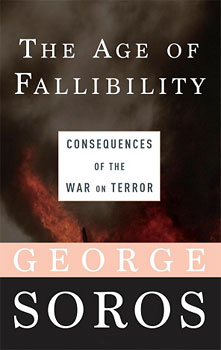
The Age of Fallibility:
Consequences of the War on Terror
by George Soros
This isn't a very thick book but it will hurt your head. He makes you think.
The Age of Fallibility: The Consequences of the War
|
The Age of Fallibility is in two parts, the first of which proffers Soros's conceptual framework as a point of departure. He extracts meaning from the central concept of an open society, an idea that has underpinned his philosophy and much of his life's work; he has consistently refined its meaning to him and his application of it since learning it from Karl Popper, his final-year tutor at the LSE. The concept of an open society is an epistemological one built on the relational dichotomy of freedom and governance and inherent imperfection, and Soros analyses it very effectively and in detail through the separation of thought and reality as illuminated by concepts of reflexivity, fallibility and far-from-equilibrium situations.
In the second part of the book, Soros uses his conceptual framework as an applied science and postulates what in his opinion is wrong with the US. His indictment of the feel-good society and the effects of consumerism on politics as well as the marketability of the war on terror make for an interesting stance.
He goes beyond the obligatory liberal indictment of George W. Bush and his presidential puppetry at the hands of Dick Cheney and Donald Rumsfeld. At times the vehemence of Soros's critique resembles that of escapees from dictatorships, and his analysis of modern America appears to owe something to the fear-driven environment of Philip Roth's fictional The Plot Against America. His study is somewhat complex and extensive but the crux of his polemical argument is that America's convergent crisis lies in the central problem that "mankind's power over nature has increased cumulatively while its ability to govern itself has not kept pace", a far from equilibrium situation that violates the principles of an open society.
| |
[more]
GeorgeSoros.com
This is a must read. Thinking is something we all should do. Especially George Bush if for no other reason than it would cause his head to explode and then we would be done with him.
palestine
Palestinians forced to scavenge for food on rubbish dumps
|
The Israeli military and economic siege of Gaza has led to a collapse in Palestinian living conditions and many people only survive by looking for scraps of food in rubbish dumps, say international aid agencies.
"The pressure and tactics have not resulted in a desire for compromise," Karen Abuzayd, the head of the UN Relief and Works Agency is said to have warned. "But rather they have created mass despair, anger and a sense of hopelessness and abandonment."
Israel closed the entry and exit points into the Gaza Strip, home to 1.5 million Palestinians, on 25 June and has conducted frequent raids and bombings that have killed 262 people and wounded 1,200. The crisis in Gaza has been largely ignored by the rest of the world, which has been absorbed by the wars in Iraq, Afghanistan and Lebanon.
"Women in Gaza tell me they are eating only one meal a day, bread with tomatoes or cheap vegetables," said Kirstie Campbell of the UN's World Food Programme, which is feeding 235,000 people. She added that in June, since when the crisis has worsened, some 70 per cent of people in Gaza could not meet their family's food needs. "People are raiding garbage dumps," she said.
| |
[more]
Cut Off, Gazan Economy Nears Collapse
|
For the last week, Zidan Abu Reziq has been sleeping outside, next to his plantings on a small square of sand he expropriated.
The Abu Reziqs, like many of the large, destitute refugee families in this shrapneled, tumbledown slum, need to plant to eat. They took the land and planted it with vegetables, an investment of about $50, most of the money that the United Nations Relief and Works Agency gave them to buy school uniforms for the children.
Zidan’s wife, Tamam, admits her 51-year-old husband sleeps with his plants because he needs to protect their investment in the lawless chaos of Gaza, where his own small theft of land, 20 square yards that belongs to the government, is dwarfed by the huge expropriations by gangs and families and militia groups that have taken over much of the best land left behind when the Israelis pulled out their settlers a year ago.
It is difficult to exaggerate the economic collapse of Gaza, with the Palestinian Authority cut off from funds by Israel, the United States and the European Union after Hamas won the legislative elections on Jan. 25.
| |
[more]
photography
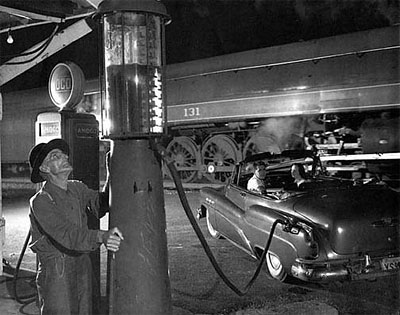
O. Winston Link
"Sometimes the Electricity Fails, Vesuvius, Virginia"
I've posted about O. Winston Link before. I will probably do it again. He photographed the end of the steam age during the mid 1950s. This picture was taken in 1956. What was different about Link's photographs is that they were taken at night with the aid of many, many flash bulbs. (O. Winston Link: Steam, Steel & Stars)
Titles
|
It's remarkable how often a picture I like was made in a place with a name that makes a perfect title. It's not that the name is literally descriptive of anything, it just somehow seems resonant.
Vesuvius was the location for a very different kind of photograh exactly fifty years ago: one of O. Winston Link's elaborately staged pictorial illustrations of the steam railroad's final days. See the middle picture here. Look carefully at the upper left corner of that picture, at the wooden brace above the gas pumps. It supports a kind of porch roof along the front of a building. That building is still there, as you can see in this picture, made from the tracks facing back to where Link's camera must have been.
| |
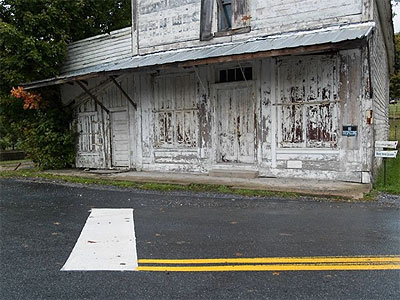
[more]
israel
IDF commander: We fired more than a million cluster bombs in Lebanon
|
"What we did was insane and monstrous, we covered entire towns in cluster bombs," the head of an IDF rocket unit in Lebanon said regarding the use of cluster bombs and phosphorous shells during the war.
Quoting his battalion commander, the rocket unit head stated that the IDF fired around 1,800 cluster bombs, containing over 1.2 million cluster bomblets.
In addition, soldiers in IDF artillery units testified that the army used phosphorous shells during the war, widely forbidden by international law. According to their claims, the vast majority of said explosive ordinance was fired in the final 10 days of the war.
| |
[more]
The occupier defines justice
By Amira Hass
|
On Jerusalem's Jabotinsky Street, opposite the President's Residence, a medium-sized plaque is fixed on a locked gate, enclosing a broad building and a lovely garden: "This building was the location of the British Mandate Government's High Military Court, which held the trials of the Hebrew resistance fighters from the Haganah, Etzel and Lehi." The sign bears the emblems of the Jerusalem municipality and the three resistance organizations. It further notes: "The resistance fighters refused to acknowledge the authority of the court to judge them, and asked to be recognized as prisoners of war."
The speaker of the Palestinian Authority's parliament, who was arrested two weeks ago by the Israel Defense Forces, also refused to acknowledge the authority of the Military Court to judge him. Obviously the two latest detainees, whose arrest was deemed by Israel to be the appropriate solution to its shortcomings in releasing kidnapped soldier Gilad Shalit, will make the same declaration. Nasser A-Shaer, the Palestinian education minister and deputy prime minister, and Mahmoud Ramahi, chief whip of the Palestinian Legislative Council, were arrested on Saturday and Sunday. Incidentally, the Palestinians have lately ceased using the verb "arrested" in regards to the arrests of Palestinians by Israeli soldiers. Instead they use the verb "abducted."
These three detainees/abducted join about 10,000 other Palestinian prisoners and detainees. As with the prisoners of the Hebrew resistance, who saw themselves as POWs regardless of their actions (killing British soldiers or Arab civilians), some Palestinians request that their prisoners be declared POWs. Others prefer the definition of political prisoners. Let's let the definitions rest. In any case, from the offense to the jailing, Israel, as an occupying force, plays around with the definitions as it sees fit.
| |
[more]
The Coming Collapse of Zionism
The Moral Bankruptcy of Israel's Founding Idea
|
Is it only observers outside the conventional mainstream who have noticed that by its murderous assault on Lebanon and simultaneously on Gaza, Israel finally exposed, for even the most deluded to see, the total bankruptcy of its very founding idea?
| |
[more]
Can You Really Not See?
By Amira Hass
|
Let us leave aside those Israelis whose ideology supports the dispossession of the Palestinian people because "God chose us." Leave aside the judges who whitewash every military policy of killing and destruction. Leave aside the military commanders who knowingly jail an entire nation in pens surrounded by walls, fortified observation towers, machine guns, barbed wire and blinding projectors. Leave aside the ministers. All of these are not counted among the collaborators. These are the architects, the planners, the designers, the executioners.
But there are others. Historians and mathematicians, senior editors, media stars, psychologists and family doctors, lawyers who do not support Gush Emunim and Kadima, teachers and educators, lovers of hiking trails and sing-alongs, high-tech wizards. Where are you? And what about you, researchers of Nazism, the Holocaust and Soviet gulags? Could you all be in favor of systematic discriminating laws? Laws stating that the Arabs of the Galilee will not even be compensated for the damages of the war by the same sums their Jewish neighbors are entitled to.
| |
[more]
book recommendation
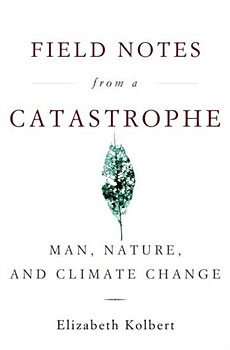
Field Notes from a Catastrophe:
Man, Nature, and Climate Change
by Elizabeth Kolbert
This is an expansion of a series originally published in New Yorker. I read the New Yorker series and I'm glad it's available and even better. It's been compared to Silent Spring. From Amazon:
|
On the burgeoning shelf of cautionary but occasionally alarmist books warning about the consequences of dramatic climate change, Kolbert's calmly persuasive reporting stands out for its sobering clarity. Expanding on a three-part series for the New Yorker, Kolbert (The Prophet of Love) lets facts rather than polemics tell the story: in essence, it's that Earth is now nearly as warm as it has been at any time in the last 420,000 years and is on the precipice of an unprecedented "climate regime, one with which modern humans have had no prior experience." An inexorable increase in the world's average temperature means that butterflies, which typically restrict themselves to well-defined climate zones, are now flitting where they've never been found before; that nearly every major glacier in the world is melting rapidly; and that the prescient Dutch are already preparing to let rising oceans reclaim some of their land. In her most pointed chapter, Kolbert chides the U.S. for refusing to sign on to the Kyoto Accord. In her most upbeat chapter, Kolbert singles out Burlington, Vt., for its impressive energy-saving campaign, which ought to be a model for the rest of the nation—just as this unbiased overview is a model for writing about an urgent environmental crisis.
| |
While the three part New Yorker series is no longer up, a New Yorker interview with Elizabeth Kolbert is:
A Planetary Problem
|
ELIZABETH KOLBERT: I guess you could say that that depends on what the meaning of the word “is” is. The principles of global warming are as well established as any in physics. Nearly a hundred and fifty years ago, a British physicist named John Tyndall discovered that certain gases in the atmosphere—we now refer to these as “greenhouse gases”—trap heat on earth by absorbing infrared radiation. There are several naturally occurring greenhouse gases, including carbon dioxide and water vapor, and together they produce the so-called “natural greenhouse effect.” Without the natural greenhouse effect, the planet would essentially be frozen. Any basic earth-science textbook talks about the natural greenhouse effect; it’s a phenomenon that is not in any way debated. All that the theory of global warming says is that if you increase the concentration of greenhouse gases in the atmosphere, you will also increase the earth’s average temperature. It’s indisputable that we have increased greenhouse-gas concentrations in the air as a result of human activity, and it’s also indisputable that over the last few decades average global temperatures have gone up. As best as can be determined, the world is now warmer than it has been at any point in the last two millennia, and, if current trends continue, by the end of the century it will likely be hotter than at any point in the last two million years.
| |
[more]
energy
Russia spins global energy spider's web
|
The vast bulk of the world's oil, gas and strategic minerals resources either is coming under or is already under the control of authoritarian, or less-than-democratic, or leftist, or otherwise radical regimes either with a decidedly anti-Western political stance and ideology or pointedly decreased sensitivities to strategic US interests.
It is difficult to name more than a handful of resource-rich states that are liberal democracies and that are still significantly aligned with the West. Only Canada and Mexico come immediately to mind, and even Canada is increasingly embracing China and the East in the sphere of strategic energy deals and agreements.
Even those resource-rich regimes that are considered to be the most moderate of the globe's producing states are far less closely aligned geopolitically with the US than they were previously.
| |
[more]
give us this day our daily photograph
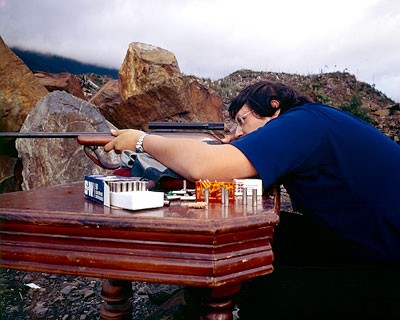
The Shootist
bigger
gordy's image archive index
It's been over two months since I've posted a picture here. I've been a little overwhelmed with Zoe's mom and her Alzheimers, Zoe's stay at the hospital, and work. I've not even been shooting. I have 6 rolls of 120 I haven't even cut up much less scanned. A test roll I have in the FlashMaster™ is the first shooting I've done in a while. And I've been going through some film angst. A few months ago Fuji upgraded their professional films and dropped their tungsten negative film. Since I shoot my product photography whith tungsten lights, this was a disaster. It so happens that Kodak had some sungsten negative film. They also had color negative film in 5x7 so I switched to using Kodak professional films. Until last week. Kodak upgraded their professional films and dropped their tungsten negative film and their 5x7 color negative film. It's a plot, that's what it is. So screw Kodak, I'm going back to Fuji. They do have a nice tungsten slide film. I will have to order some and start testing. I've avoided slide film. It doesn't have the lattitude of negative film. This means I will have to be more careful with exposure. As sort of a test I grabbed some old Ektachromes. This one is 30 years old. Scary. In September of 1976 I took a trip on an Alaska State Ferry to Wrangell, Alaska, up the Inside Passage. I went to visit a friend who worked at the sawmill in Wrangell. I booked passage but not a stateroom. I laid out my sleeping bag on one of the lawn chairs on the covered sun deck and watched some of the most amazing scenery slide by. Best vacation I've ever had. I took my 4x5 Nagaoka lightweight field camera and some 4x5 Ektachrome. There's not a lot to do in Wrangel, which is small island. Going up to the quarry and target shooting was the major entertainment. That and reloading in the evening. Scanning transparencies sure is easier than negatives. Maybe this slide thing won't be too bad. The exposures on those Ektachromes weren't too bad, either. I will post more from that Alaska trip. I could never get these Ektachromes printed right. Reversal paper in 1976 sucked. Cibachrome was supposed to be very good but every Cibachrome I ever saw sucked, too.
economy
Day of Reckoning; America’s Economic Meltdown
|
There’s growing concern among economists and market-savvy pundits that the global financial system is hanging by a few well-worn threads that could snap at any time. The $10.4 trillion real estate “bubble” has attracted the most attention, but the shaky derivatives market, hedge funds, and falling dollar are equally worrisome. 20 years of deregulation has created an economic monster which is increasingly unmanageable and threatens to bring down the whole system in a heap.
As Gabriel Kolko said in a recent counterpunch article (“Why a Global Economic Deluge Looms”), “The entire global financial structure is becoming uncontrollable in crucial ways its nominal leaders never expected. Instability is increasingly its hallmark….Contradictions now wrack the world’s financial system, and if we are to believe the institutions and personalities who have been in the forefront of the defense of capitalism, it may very well be on the verge of serious crisis.”
Deregulation has reduced market transparency and created a plethora of financial instruments which are relatively untested and extraordinarily volatile. By eliminating the “rules of the game” the market big shots have raked in hefty profits but reshaped the economic landscape in a way that no one can predict what the ultimate outcome will be. The new investment-regime includes such opaque standards as credit derivatives, credit derivative futures, and collateralized debt obligations. Hedge funds are now loaded with these over-leveraged debt-instruments that promise a generous return in an “up-tempo” market, but certain doom in an economic downturn. Now, that the indicators are all pointing toward a slowdown or recession, the potentially devastating effects of this new “liberalized” system will soon be felt throughout the global economy.
| |
[more]
Rigging the Market; the secret maneuverings of the Plunge Protection Team
|
“Every individual…generally, indeed, neither intends to promote the public interest, nor knows how much he is promoting it. By preferring the support of domestic to that of foreign industry he intends only his own security; and by directing that industry in such a manner as its produce may be of the greatest value, he intends only his own gain, and he is in this, as in many other cases, led by an invisible hand to promote an end which was no part of his intention.” Adam Smith, “The Wealth of Nations”
The Plunge Protection Team is a working group of high-ranking officials from the Dept. of the Treasury, Wall Street, and the Federal Reserve. Its purpose is to establish the protocols for preventing another incident similar to the stock market crash of 1987. In the event of a steep decline, the team is prepared to buy large amounts of equities in an effort to stabilize the market.
Some people believe that the government has no right to interfere in the activities of “free markets”. Others think it is a prudent way of staving off economic collapse. Still others believe that the intrusion of government, aided by the privately-owned Federal Reserve and the NYSE, naturally favors the larger institutional investors and creates an uneven playing field for small investors.
Whatever side one is on, it is proof-positive that “free markets” are merely a public relations myth with no basis in reality. The preservation of the system takes precedent over the lip-service to ideology; the “invisible hand” will always be overpowered by the manicured and mettlesome fingers of banking elites and Wall Street big wigs. This is their system and they’re not going to let it be obliterated by some foolish commitment to principle.
| |
[more]
let there be light
More excuses for letting life get in the way of blogging. There, that is out of the way. I did make an improvement on the light I can carry around. I had been using my venerable Vivitar 283. For a small package, it does put out light.
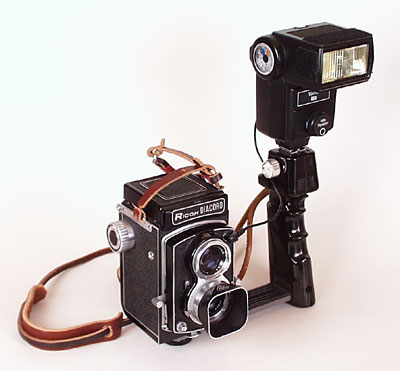
But, in the end, it's still a flash meant to go on a hotshoe and isn't as powerful as I need. So the FlashMaster™ now is sporting a Metz 45 CL-1.
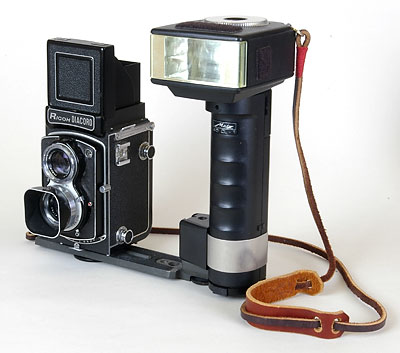
Quick action on a post on Large Format Forum scored this beauty. (I noticed I had forgotten to attach the flash cord for these pictures.) It has light. It's good for 150 feet at ISO 100 and over 400 feet with ISO 400 film loaded. In addition to throwing out some serious light, it has a lot of other features that make it very useable. The top of the head had two lugs for attaching a neck strap.
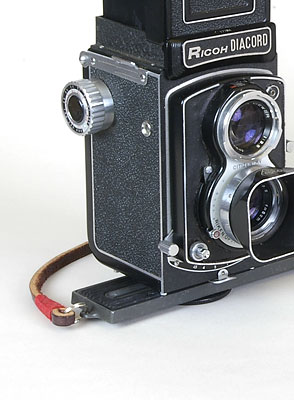
The base plate also has a lug for attaching a neck strap. This lets the camera/flash unit balance nicely. The base plate is wide enough to hold the camera steady. The base plate is also detached easily from the flash.
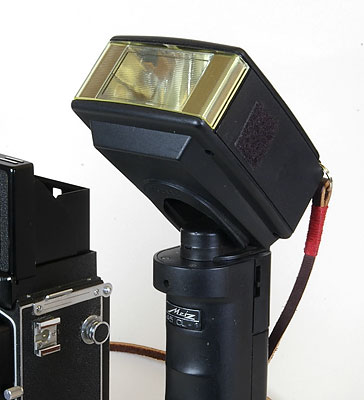
Like many flashes the head rotates up to vertical for bounce flash.
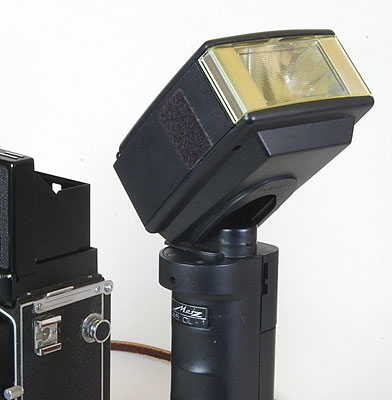
Unlike many flashes the head also rotates around a full 360 degrees so you can bounce flash from behind. It takes 6 AA batteries in the base of the handle. It also has numerous battery accesories inlcuding a battery pack. The AA batteries will give 100 full power flashes and up to 2,000 flashes at partial power. A twin lens reflex and a hand-held flash gun is a pretty powerful tool.
|
|
|
|

























